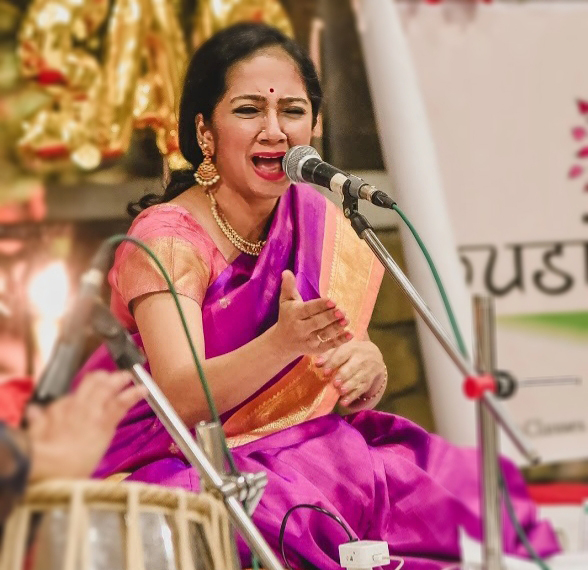
The roots of Indian classical music are traceable back to the vedas. The Samvad to be precise. In turns the Vedas are believed to be ancient ways of connecting with the divine spirit or God. In other words, an old spiritual paradigm for men to connect with God and the forces of nature. Music that emanated from the vedas were yet another dimension to the spiritual truths contained in the ancient chants.
When we observe the way Indian Classical Music has been and continues to be imparted to this day, we can spot unerringly, the deep spiritual underpinning it contains. Especially mindfulness. When a singer or ever a learner commences singing Indian Classical music, one can observe the immense demand placed on the artist to be completely mindful and present in the music he is creating. This is imperative in Indian Classical Music because the production of pure Sur( or divine, resonant key) is central to the philosophy that defines classical music. To understand this better, one can observe the initial portions of a typical classical music concert. The resting on each note and the artists’ complete mindfulness presence in those notes is unmistakable. There is no other way to produce pure Sur or key in Indian Classical Music. The artist has to, by compulsion forget his or her past and future and be united with his musical present which is the note or key he sings at a particular moment. A deviation from this state is punished with impure notes that do not bring out the flavor of the Raag he is presenting. Being present and mindful is required of him in multiple ways. His mind has to be in the present as his body, his emotions and his spirit. Without this integrated mindfulness the perfect sur cannot be produced. And when he does manage to produce the perfect key he, by extension draws his audiences into the time warp of the mindful present. In those moments he and his audiences know nothing but the present and are completely mindful of the beauty of the music being sung or produced.
This is the reason more people have to expose themselves to learning/hearing Indian Classical music. It is a simple yet powerful way to introduce mindfulness in a pleasing environment.
Today’s generation is straddled with many staggering challenges. Most of the serious among those pertain to unwholesome and frittered states of mind encouraged by social media and technology. There is an urgent need to find accessible ways to becoming more centered and mindful. Indian Classical music can be the answer. If we only we can give this magical form a chance to transform us.